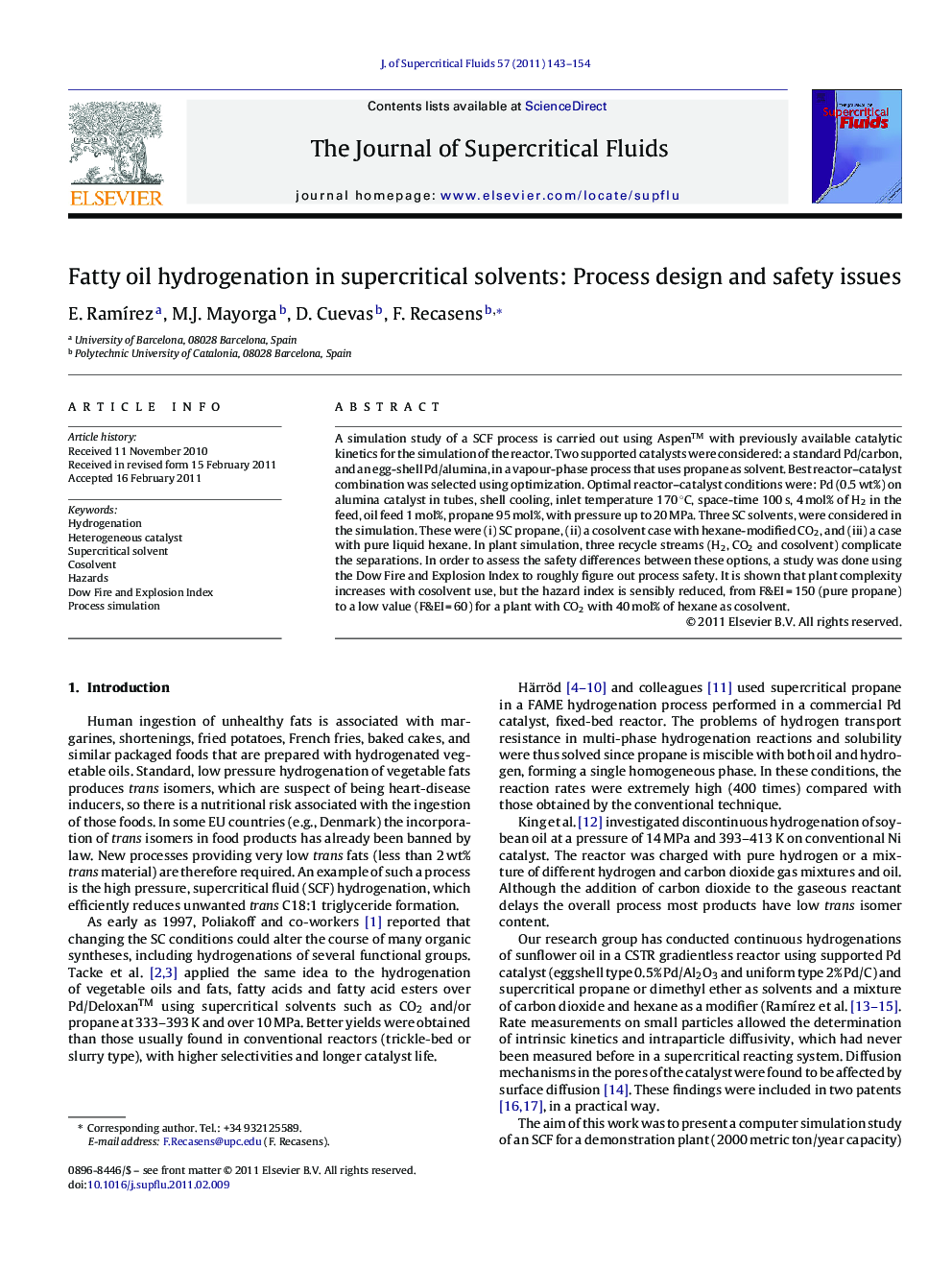| Article ID | Journal | Published Year | Pages | File Type |
|---|---|---|---|---|
| 231223 | The Journal of Supercritical Fluids | 2011 | 12 Pages |
A simulation study of a SCF process is carried out using Aspen™ with previously available catalytic kinetics for the simulation of the reactor. Two supported catalysts were considered: a standard Pd/carbon, and an egg-shell Pd/alumina, in a vapour-phase process that uses propane as solvent. Best reactor–catalyst combination was selected using optimization. Optimal reactor–catalyst conditions were: Pd (0.5 wt%) on alumina catalyst in tubes, shell cooling, inlet temperature 170 °C, space-time 100 s, 4 mol% of H2 in the feed, oil feed 1 mol%, propane 95 mol%, with pressure up to 20 MPa. Three SC solvents, were considered in the simulation. These were (i) SC propane, (ii) a cosolvent case with hexane-modified CO2, and (iii) a case with pure liquid hexane. In plant simulation, three recycle streams (H2, CO2 and cosolvent) complicate the separations. In order to assess the safety differences between these options, a study was done using the Dow Fire and Explosion Index to roughly figure out process safety. It is shown that plant complexity increases with cosolvent use, but the hazard index is sensibly reduced, from F&EI = 150 (pure propane) to a low value (F&EI = 60) for a plant with CO2 with 40 mol% of hexane as cosolvent.
Graphical abstractFigure optionsDownload full-size imageDownload as PowerPoint slideHighlights► Solvent effect on the safety of the sunflower oil supercritical hydrogenation over Pd. ► A simulation study of the plant is performed with Aspen. ► The safety is evaluated using the Dow Fire and explosion Index. ► SC propane, hexane-modified CO2 and high pressure liquid hexane are the tested solvents. ► The addition of cosolvent in CO2 allows to decrease the process hazard significantly.
